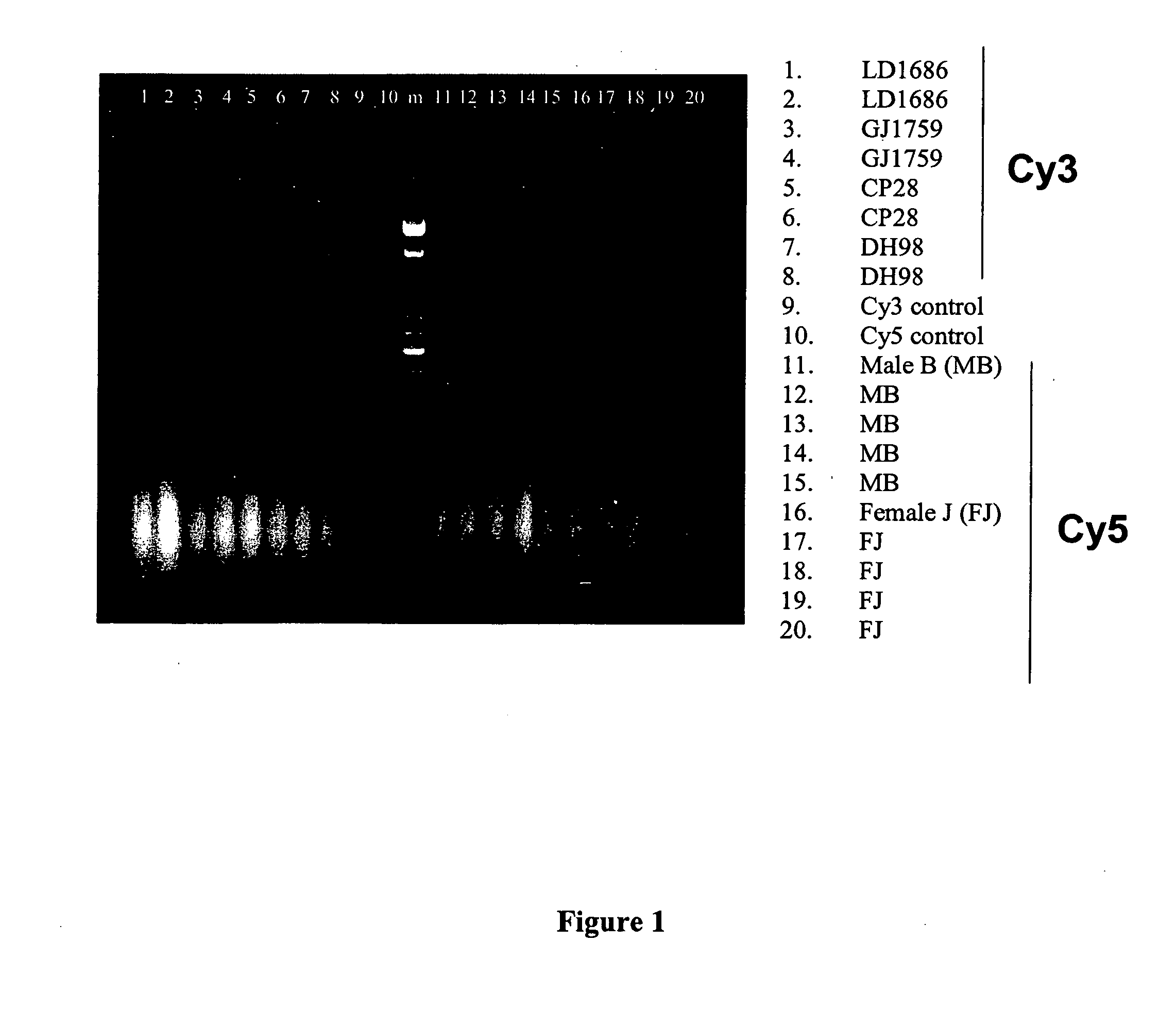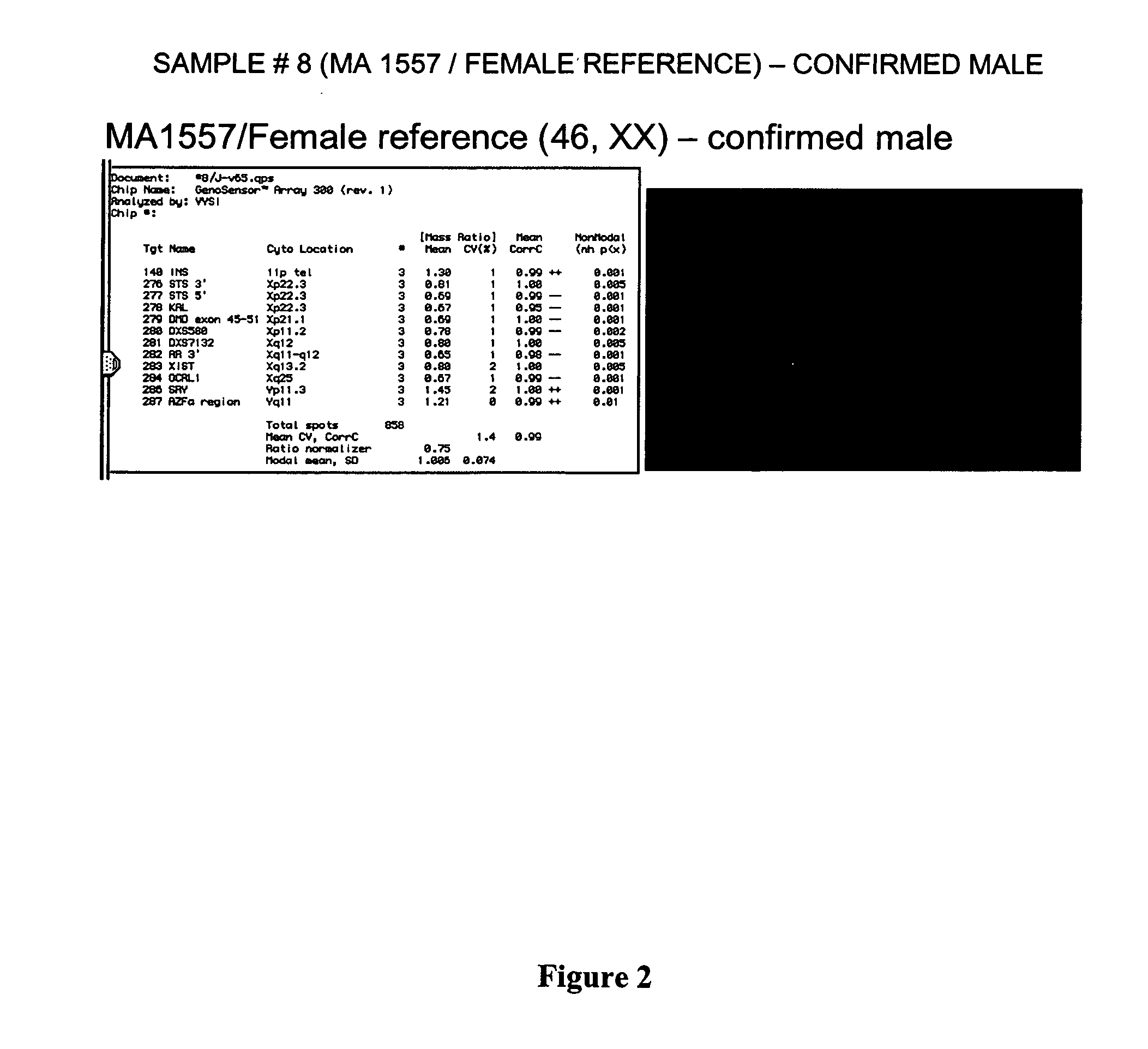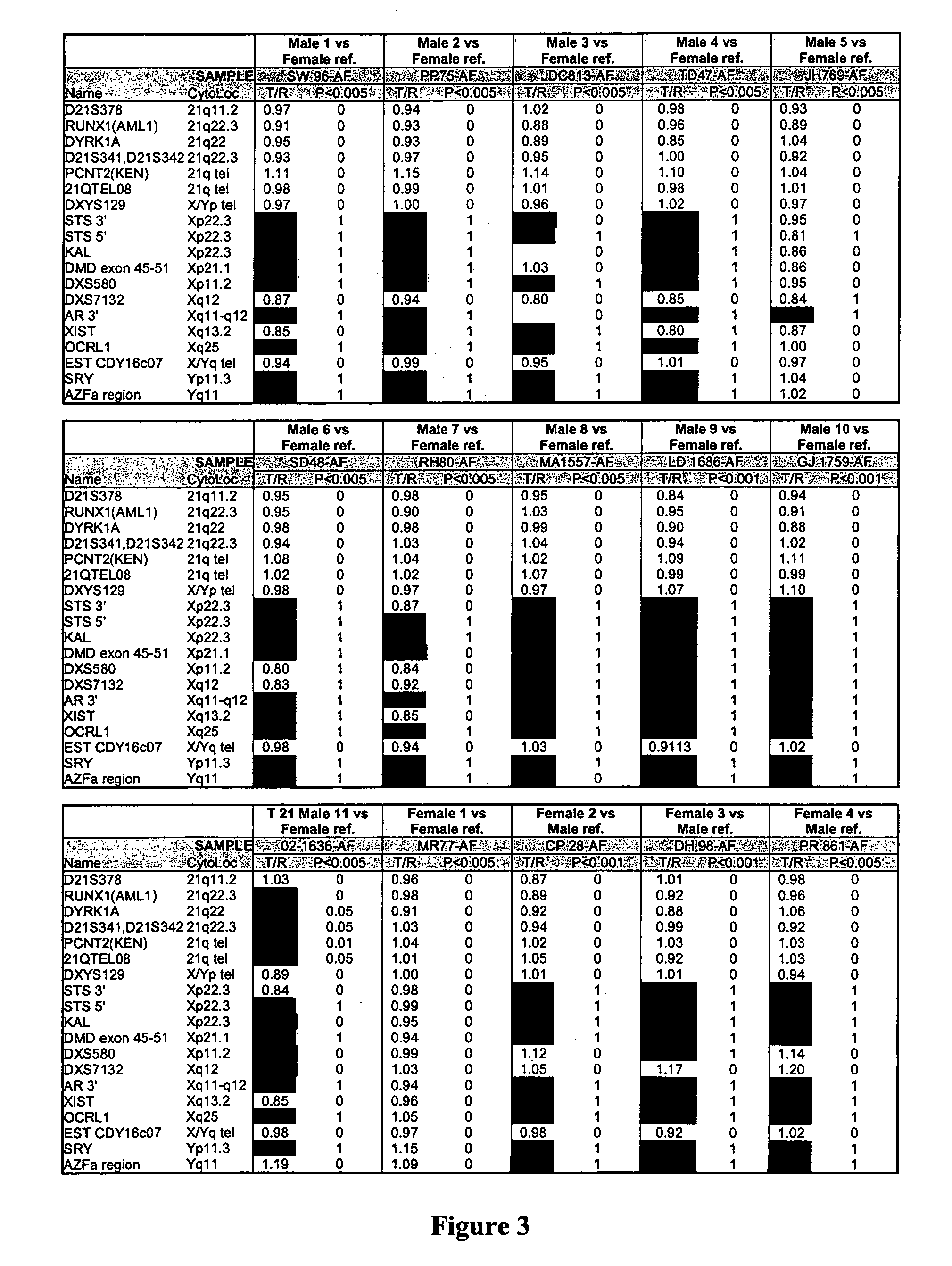Prenatal diagnosis using cell-free fetal DNA in amniotic fluid
a fetal dna and amniotic fluid technology, applied in the field of prenatal diagnosis using cell-free fetal dna in amniotic fluid, can solve the problems of enormous medical care costs, numerical and structural chromosomal abnormalities over the whole genome, tedious, time-consuming and laborious, etc., to achieve high quality fetal dna, improve the quality of life, and improve the extraction method rapid
- Summary
- Abstract
- Description
- Claims
- Application Information
AI Technical Summary
Benefits of technology
Problems solved by technology
Method used
Image
Examples
example 1
Amniotic Fluid Fetal DNA Isolation and Preliminary Tests
[0222] Frozen amniotic fluid supernatant specimens (38) were obtained from the Tufts-New England Medical Center (Tufts-NEMC) Cytogenetics Laboratory (D. W. Bianchi et al., Clin. Chem. 2001, 47: 1867-1869). All samples were collected for routine indications, such as advanced maternal age, abnormal maternal serum screening results, or detection of a fetal sonographic abnormality. The standard protocol in the Cytogenetics Laboratory is to centrifuge the amniotic fluid sample upon receipt, place the cell pellet into tissue culture, assay an aliquot of the fluid for alpha-fetoprotein and acetyl cholinesterase levels, and store the remainder at −20° C. as a back-up in case of assay failure. After six months, the frozen amniotic fluid supernatant samples are normally discarded.
[0223] The frozen fluid samples obtained from the Cytogenetics Laboratory were initially thawed at 37° C. and then mixed with a vortex for 15 seconds. An aliq...
example 2
Molecular Karyotyping using Cell-Free Fetal DNA from Amniotic Fluid
[0228] To determine if cell-free fetal DNA in amniotic fluid could be used for molecular karyotyping, cell-free DNA was extracted from eight frozen amniotic fluid supernatant samples from four known euploid males and four known euploid females. Each sample was ≧10 mL in volume and yielded between 200 and 900 ng of DNA. The samples were sent to Vysis for analysis. The results obtained by Vysis confirmed the quantity of DNA present. The concentration of DNA was adjusted to 25 ng / μL. Samples were labeled with Cy-3™ and Cy-5™ according to the current labeling protocol for the GenoSensor™ Array 300. For each sample, reference male and female DNA of equal quantity was labeled for CGH. After DNase digestion, samples were visualized on a 2% agarose / ethidium bromide gel. As shown in FIG. 1, DNA from samples and controls demonstrated uniform amplification and labeling.
[0229] Samples were combined, added to hybridization buff...
example 3
Use of Amniotic Fluid Cell-Free Fetal DNA in CGH Microarrays to Generate a Molecular Karyotype: Preliminary Studies
[0233] In a typical analysis, fetal DNA is extracted from stored amniotic fluid supernatant samples with normal and abnormal karyotypes. The samples are then sent to Vysis for analysis. The samples are hybridized to euploid male and euploid female reference DNA on CGH microarrays. The hybridization data is then analyzed and interpreted by the Applicants at Tufts / New England Medical Center.
[0234] Vysis has developed a novel microarray technology system that permits simultaneous assessment of multiple genomic targets. The GenoSensor™ system consists of the following hardware: Macintosh G3 PowerPC computer with 17″ high resolution display monitor, 1.3 million pixel high-resolution cooled CCD camera, custom-designed optics, automated 6-position filter wheel with 3 filters, and xenon illumination source. The microarray consists of over 1,300 gene loci derived primarily fro...
PUM
| Property | Measurement | Unit |
|---|---|---|
| diameter | aaaaa | aaaaa |
| diameter | aaaaa | aaaaa |
| diameter | aaaaa | aaaaa |
Abstract
Description
Claims
Application Information
 Login to View More
Login to View More - R&D
- Intellectual Property
- Life Sciences
- Materials
- Tech Scout
- Unparalleled Data Quality
- Higher Quality Content
- 60% Fewer Hallucinations
Browse by: Latest US Patents, China's latest patents, Technical Efficacy Thesaurus, Application Domain, Technology Topic, Popular Technical Reports.
© 2025 PatSnap. All rights reserved.Legal|Privacy policy|Modern Slavery Act Transparency Statement|Sitemap|About US| Contact US: help@patsnap.com



